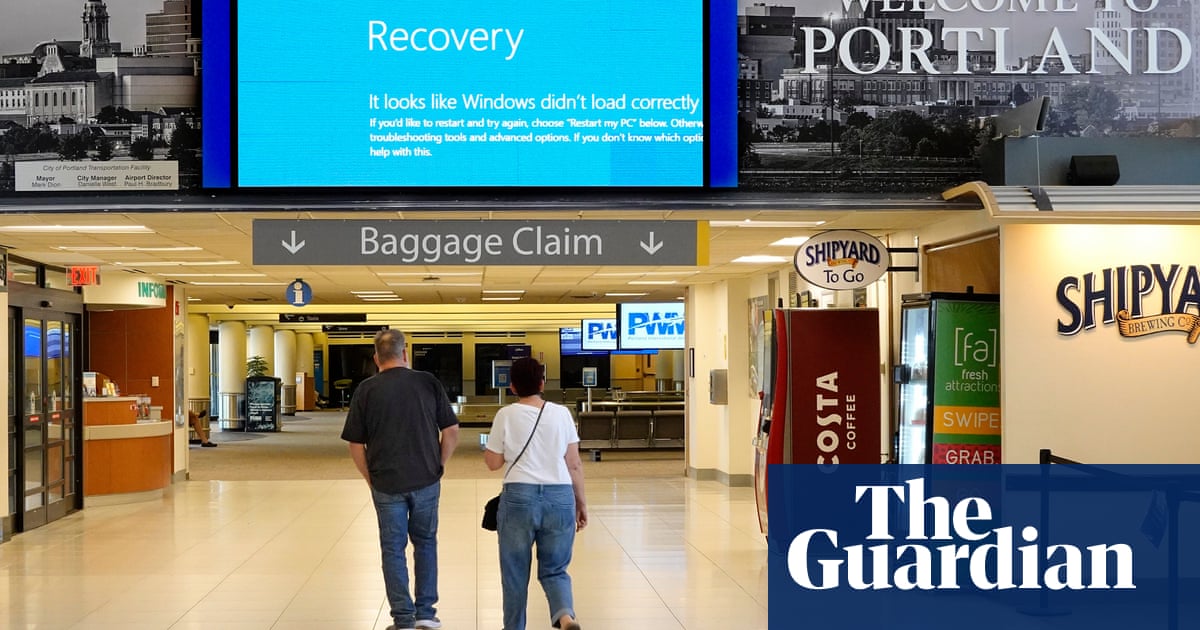- cross-posted to:
- world
- cross-posted to:
- world
Fault in CrowdStrike caused airports, businesses and healthcare services to languish in ‘largest outage in history’
Services began to come back online on Friday evening after an IT failure that wreaked havoc worldwide. But full recovery could take weeks, experts have said, after airports, healthcare services and businesses were hit by the “largest outage in history”.
Flights and hospital appointments were cancelled, payroll systems seized up and TV channels went off air after a botched software upgrade hit Microsoft’s Windows operating system.
It came from the US cybersecurity company CrowdStrike, and left workers facing a “blue screen of death” as their computers failed to start. Experts said every affected PC may have to be fixed manually, but as of Friday night some services started to recover.
As recovery continues, experts say the outage underscored concerns that many organizations are not well prepared to implement contingency plans when a single point of failure such as an IT system, or a piece of software within it, goes down. But these outages will happen again, experts say, until more contingencies are built into networks and organizations introduce better back-ups.



I mean, Microsoft themselves regularly shits the bed with updates, even with Defender updates. It’s the nature of security, they have to have that kind of access to stop legit malware. That’s why these kind of outages happen every few years. This one just got to much coverage from the banking and airline issues. And I’m sure future outages will continue to get similar coverage.
But the Crowdstrike CEO was also at McAfee in 2010 when they shit the bed and shut down millions of XP machines so it seems like he needs a different career…
The problem is the monoculture. We are fucking addicted to convenience and efficiency at all costs.
A diverse ecosystem, if a bit more work to manage, is much more resilient, and wouldn’t have been this catastrophe.
Our technology is great, but our processes suck. Standardization. Just in time. These ideas create incredibly fragile organizations. Humanity is so short sighted. We are screwed.
That seems like a pretty hardcore doomer view for an event that didn’t really do much in the grand scheme of things. I wouldn’t have even known it happened if it wasn’t all over the internet, and I work in tech to boot.
Time is money. Training all of the staff needed to manage not just one system in multiple areas, but multiple systems in multiple areas is a horrible idea. Sure for a one off issue like this it would save your bacon. But how often does this really happen?
I’m not sure you can blame the CEO. As much as I despise C-level execs this seems like a failure at a much lower level. Now the question of whether this is a culture failure is a different story because to me that DOES come from the CEO or at least that level.
This happened to me in December 2022/January 2023. Pretty similar problem. Just a regular Windows update caused it. Weirdly it didn’t affect everyone (and I’m not on any sort of beta channels). Installing KB5021233 keeps causing BSOD 0xc000021a.
How difficult would it be for companies to have staged releases or oversee upgrades themselves? I mostly just use Linux but upgrading itself is a relatively painless processing and logging into remote machines to trigger an update is no harder. Why is this something an independent party should be able to do without end user discretion?